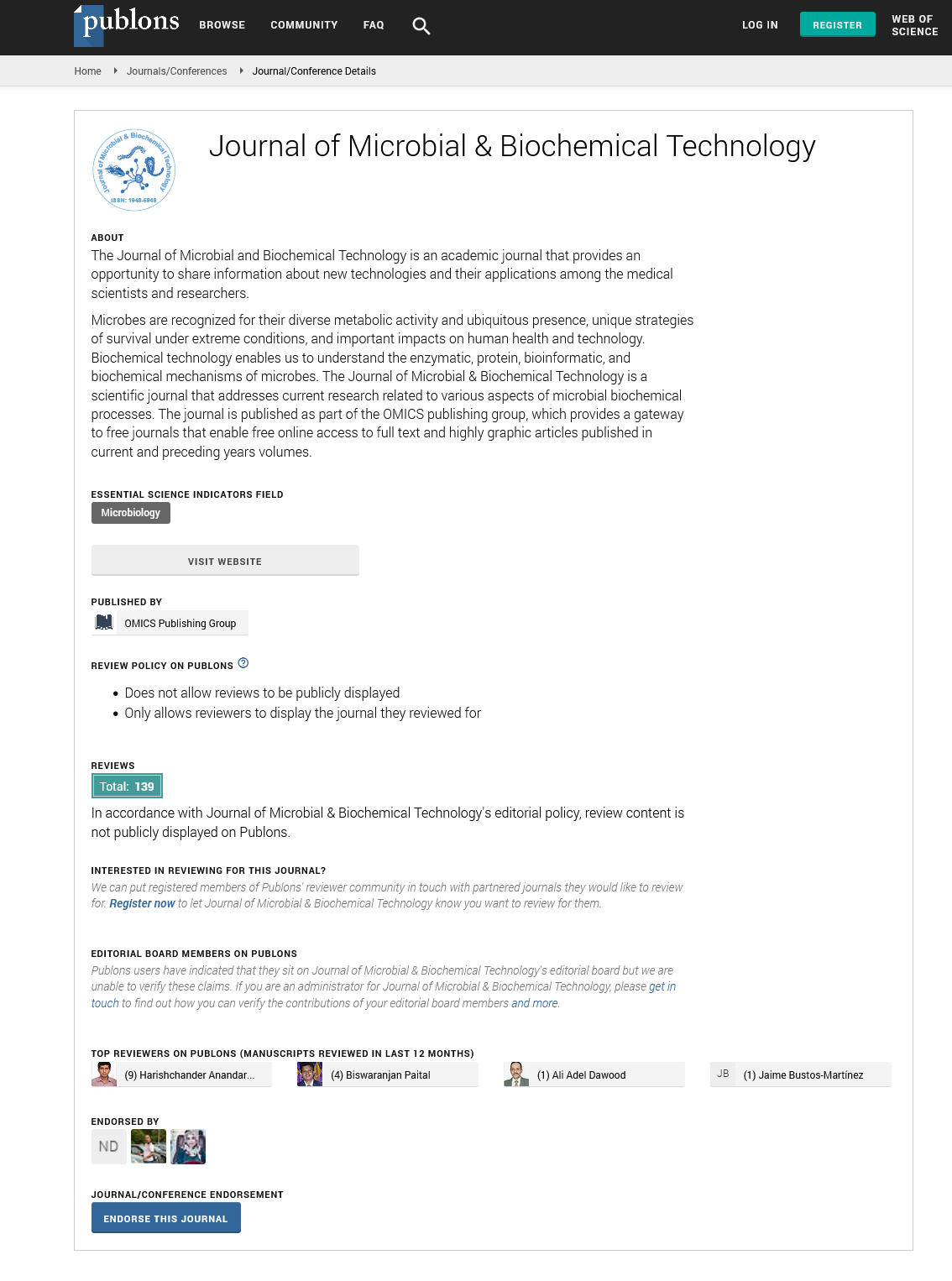Indexed In
- Academic Journals Database
- Genamics JournalSeek
- Academic Keys
- JournalTOCs
- China National Knowledge Infrastructure (CNKI)
- Scimago
- Access to Global Online Research in Agriculture (AGORA)
- Electronic Journals Library
- RefSeek
- Directory of Research Journal Indexing (DRJI)
- Hamdard University
- EBSCO A-Z
- OCLC- WorldCat
- SWB online catalog
- Virtual Library of Biology (vifabio)
- Publons
- MIAR
- University Grants Commission
- Geneva Foundation for Medical Education and Research
- Euro Pub
- Google Scholar
Useful Links
Share This Page
Journal Flyer

Open Access Journals
- Agri and Aquaculture
- Biochemistry
- Bioinformatics & Systems Biology
- Business & Management
- Chemistry
- Clinical Sciences
- Engineering
- Food & Nutrition
- General Science
- Genetics & Molecular Biology
- Immunology & Microbiology
- Medical Sciences
- Neuroscience & Psychology
- Nursing & Health Care
- Pharmaceutical Sciences
Abstract
Physicochemical-Microbiological Studies on Irradiated Date Fruits with Studying Migration Monomers of Packages Materials
Farag SEA, Shaltoot A, Emam M, El Nawawey M and Asmaa Ezz El Dien
Different food packaging materials (LDPE, HDPEcolorless, PET and LDPEblue) were packaged with dates, and irradiated with γ-rays at 0.0, 1.0, 3.0 and 5.0 kGy. Physical, chemical analysis of Polyethylene low density LDPEblue layer and colorless–were used. Besides studying the changes of stored dates quality, which extend to nine months under room temperature (23-25°C, 70-75% RH%) and freezing (-3°C), no significant effects were observed in LDPE, as in the permeability of oxygen, carbon dioxide transmission rate and water vapor, or migration tests up to 20.0 kGy; whereas the differences were significant in the mechanical characters. Detection of free radicals using Electron Spin Resonance (ESR) proved presence of free radicals at high dose (20.0 kGy), then disappeared after three weeks. GC-MS analysis of polymers showed produce 18 compounds after irradiation processes, which are volatile or non–volatile compounds at the applied doses. The major constituent was di-n-butylphthalate, which was affected by irradiation. Its concentration was 98.33 % (control), and then decreased to 95.91%, 72.57% by 5.0 and 20.0 kGy, respectively. One of the Radiolytic Products (RPs) are more toxic as bis(2-ethylhexyl)phthalate (0.59%), as mentioned by WHO. Irradiation did not cause significant changes in date’s quality, except the color; only more darkening in color during long storage was observed at room temperature, light color resulted at frozen storage. γ-rays eliminated insects completely and decreased the microbiological contamination in irradiated samples.

